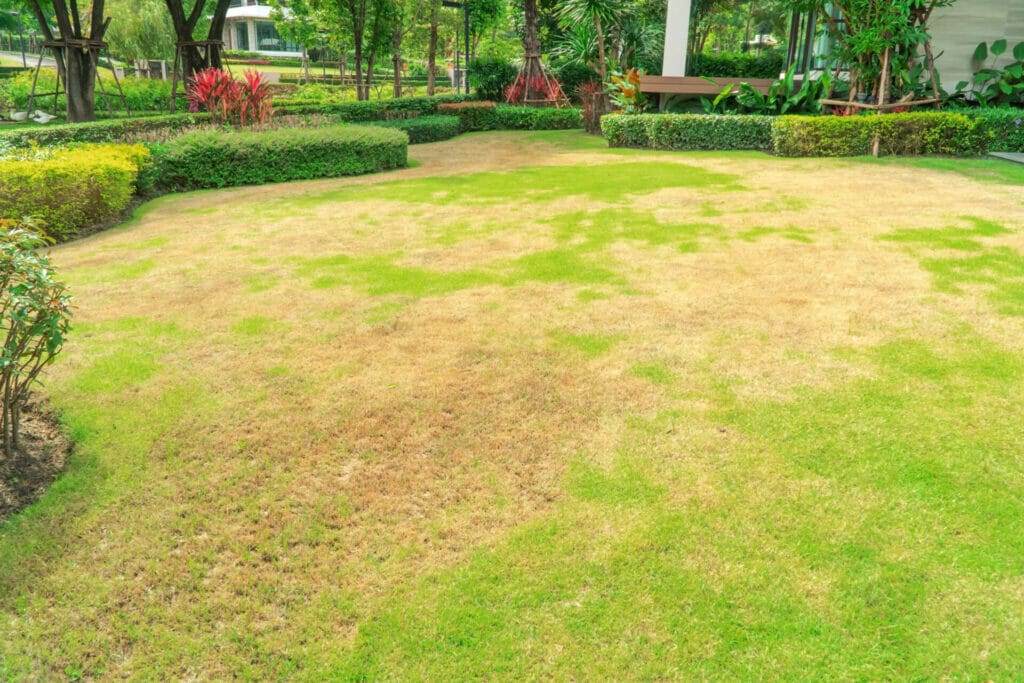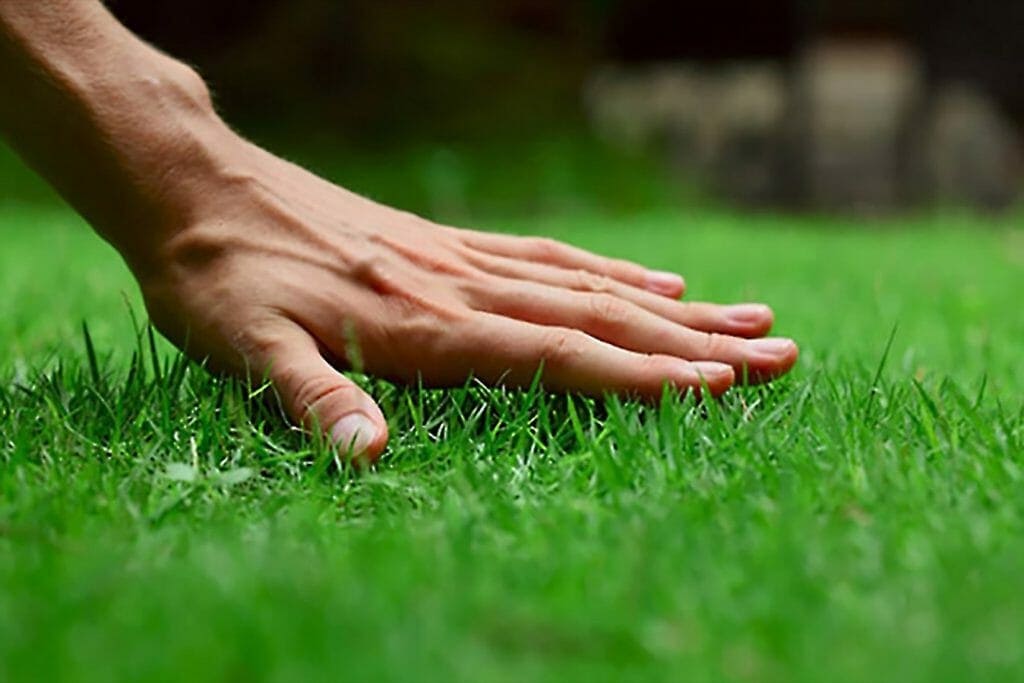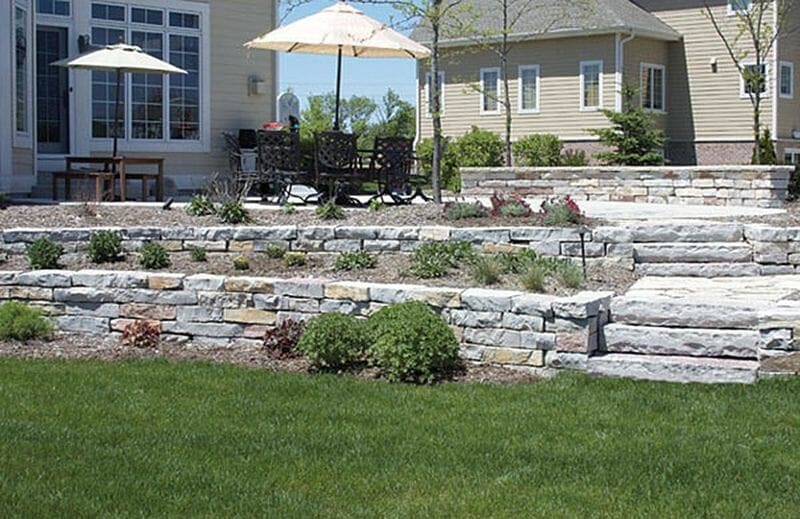Many homeowners take pride in their green, healthy lawns. But sometimes, despite our best efforts, our grass can start to look a little sad and patchy. If your lawn is suffering from dryness, there are a few things you can do to bring it back to life. First, make sure you’re watering regularly and deeply. Grass roots need water to grow, so giving your lawn a good soaking once or twice a week is essential. It’s also important to fertilize your lawn regularly to give the grass the nutrients it needs to stay green and healthy. Lastly, make sure you’re mowing correctly. Grass that’s mowed too short is more likely to dry out and turn brown. By following these simple tips, you can keep your lawn looking its best all season long.
How to Fix Dry Grass and Brown Spots on Your Lawn
Keep your yard green and lush by addressing these problems before they take over.
You love the sight of a lush, well-manicured lawn that turns your backyard into a green oasis. But if you have some unsightly dry, brown spots, we’ve got good news—there’s a fix for that.
From matted grass to insect problems, we’re here to help you convert your lackluster yard into a verdant space. Here are eight common problems with turf grass and how to identify and fix each one to maintain a healthy, good-looking lawn.
1. Problem: Brown Spots
What the Lawn Is Trying to Tell You: Few lawn problems are as unsightly as seeing your lush, green lawn punctuated with large brown spots. There are several reasons for brown, or even dead, spots in your lawn. Some are obvious, such as a dog doing its business on the grass, but others require a bit more detective work. Grass can turn brown if the soil’s pH is too high, meaning the soil is too acidic. You can test the pH and add nutrients, like lime or sulfur, which will correct the pH balance. But in extreme cases, you may need to replace the grass and soil altogether.
Soil test kits are sold online and in garden shops; both battery-powered digital meters and traditional manual test kits are available.
You can check your soil’s condition with this rudimentary DIY test:
+ Place a handful of soil into a clean container.
+ Add ½ cup of white vinegar.
+ If the soil starts to fizz, then it’s likely alkaline.
+ If there is no reaction, take a second container and add some fresh soil.
+ Pour into the container ½ cup of water, mix well, then add ½ cup of baking soda.
+ If the soil begins fizzing, then the soil is likely acidic.
+ If there’s no reaction to either test, then the soil has a neutral pH.
+ If the soil is acidic, amend it with pulverized lime or wood ash. If the test proves the soil is alkaline, amend it with sulfur or pine needles.
If the pH or some other factor, like improperly applied toxic herbicide, isn’t causing the brown spots, then the culprit might be a physical obstruction. “A lot of times, an inch or so below the soil there can be a rock or stone, causing the roots to dry up,” Adam Cain, the vice president of Ryan Lawn & Tree in the Kansas City area, tells Popular Mechanics. “You have to physically dig up the rock and remove it.”
If the brown spots only appear in one area of your lawn, check your sprinklers. You may need to adjust the sprinkler heads to get full coverage.
2. Problem: Grass Is Wilting or Turning Brown
What the Lawn Is Trying to Tell You: When an entire lawn starts to turn brown or wilt, it usually means it’s time for deep watering. Most lawns are composed of a mix of different types of grass, and one type might start to wilt or turn brown before the others. The brown blades, even when mixed with healthy green blades, are early indicators that the lawn is starting to suffer drought damage.
“If you haven’t increased your watering since the start of spring, this is the time,” says Cain. Check soil moisture by sticking a long screwdriver into the ground. If the soil is dry a couple of inches down, you need to water for longer periods of time to allow the water to sink deeper into the soil.
“You want to water infrequently, but for longer periods to encourage the roots to go deeper,” Cain says. “Watering lightly every day isn’t as good as a deep watering two or three times a week.”
The ideal time to water a lawn is between 5 a.m. and 9 a.m. Cool early-morning temperatures limit evaporation, but the grass will still dry during the course of the day. Many people water at night because it’s cooler, but that’s not a good idea because the grass stays wet all night, which can promote fungus and diseases.
3. Problem: Circles Pop Up in the Grass
What the Lawn Is Trying to Tell You: Mysterious grass circles, called fairy rings, can appear in an otherwise healthy-looking lawn. They’re most often caused by a fungus in the soil. You might also see mushrooms growing in a circle.
Fungal threads in the soil will initially cause the circle of grass to appear greener than the surrounding grass because there is more decaying organic matter there. “The decay is providing nutrients to the soil and giving it more moisture,” Cain says. But as the fungus grows and works deeper into the ground, it will eventually starve out the grassroots denying them moisture and nutrients. And, as mentioned earlier, watering after dark should be avoided. “Watering in the evenings can create a microclimate and make the fungus even worse,” Cain says.
Your first line of defense against these circles is to apply a fungicide to the lawn. And you only need to treat the affected area, not the entire lawn. If that doesn’t work, dig up the ring and plant new grass.
4. Problem: Grass Is Matted Down
What the Lawn Is Trying to Tell You: This, too, could be a fungus problem, says Chad Diller, a marketing coordinator for Tomlinson Bomberger, a lawn care, landscape, and pest-control company in Lancaster, Pennsylvania. “Consecutive wet nights during the summer are a prime cause of matting,” Diller says. “If you have an environment of dampness and warm temperatures, it can quickly lead to fungi.”
You’ll need to examine the blades of grass close up to see whether the problem is actually fungus or something else, like improper watering. If there are dead spots on the lawn, examine the grass adjacent to the dead area to identify the problem. “The key is to look not so much at the dead leaves, but at the ones that are dying. You might see spots, discoloration, or lines across the grass,” Diller tells Popular Mechanics. “With fungus, the morning dew clings to it, so it’s easier to see. It looks like a spider’s web.”
University extensions can help you identify the specific fungus, and then provide fact sheets for treating it.
5. Problem: Grass Won’t Grow Under a Tree
What the Lawn Is Trying to Tell You: Growing grass in the shade of trees is particularly challenging, and in some cases, impossible. Large trees can block the sun, while pine trees drop needles around the trunk, which can kill the grass.
To be perfectly honest here: let it go.
Trying to maintain healthy turf under a tree can be a constant challenge. You’ll have to trim back branches to let the sun shine through, or continually rake up pine needles. Even then, the grass may not grow. And large surface roots can leave the area beneath the tree un-mowable.
“You’re better off not fighting it,” Cain suggests. “You’re better off not having the competition between the tree and the turf.” Instead, he recommends spreading mulch around the base of the tree to add color and create an attractive border.
6. Problem: Insects Taking Over
What the Lawn Is Trying to Tell You: Lawns attract all sorts of creepy crawly bugs, and once insects take up residence in the grass, they can cause all kinds of problems. A lawn suffering from disease or heat stress from lack of water is most vulnerable. The trick is to get down and take a close look to determine what type of insect is there.
Common lawn pests include cutworms, armyworms, and a newer threat, the Japanese beetle. These iridescent, fingernail-sized bugs feast on roses and certain tree species like birch and linden. But, they over-winter in your lawn, and when the larvae emerge, they’ll start eating the grassroots.
You can treat infestations with insecticides, but be careful. “Knowing what bug you’re targeting is the key,” Diller said. “It’s important to use an insecticide that is labeled for that particular insect.” And avoid broad-spectrum insecticides like neonicotinoids; they’re indiscriminate pesticides that kill beneficial insects like pollinators, which can harm your yard’s overall health and open up the habitat for invasive pests.
7. Problem: Lawn Has Yellow, Brown, or Dark-Green Streaks
What the Lawn Is Trying to Tell You: If your lawn has rows of pale yellow, burnt-brown, or dark-green grass, it’s typically caused by an uneven application of fertilizer.
The areas of the lawn that receive the proper amount of fertilizer will have a healthy, dark green color. Parts that didn’t receive enough fertilizer, or maybe none at all, will be a pale green or even yellow. Finally, grass that’s over-fertilized will be burnt and turn brown.
To fix the problem, start by watering the damaged lawn well to encourage the grass to grow. And then, be careful not to over-fertilize; it will only compound the problem. Instead, wait until the fall and use a winterizing fertilizer to fortify the grass for the next season. Use a spreader to ensure an even application and make sure to use the proper spread rate, as indicated on the spreader.
And if the burned sections of grass don’t grow back, you’ll have to remove all the dead patches and reseed or re-sod the area.
8. Problem: Grass Is Coming Up in Clumps
What the Lawn Is Trying to Tell You: If loose clumps of grass are coming up by the handful, there are probably grubs in the soil eating away the grassroots. Without a healthy root system, the turf will become loose and peel up. “When you pull on the grass, it comes up like a welcome mat,” Diller says, “and you’ll be able to see the grubs right there in the soil.”
Grubs look like short, fat, white worms. Eliminate them by applying a grub-killing insecticide.



